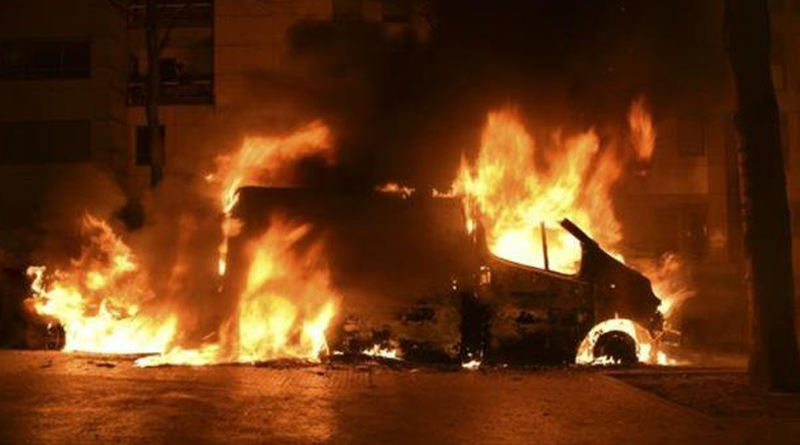Rumblings of discontent from the five southern states once again raise the question whether they might get together to demand a separate Dravida Nadu. The latest resentment is over the terms of reference of the 15th Finance Commission, which will recommend the sharing of central finances among states based on the 2011 census rather than the 1971 census, as was the custom earlier.
Southern states were always leaders in family planning, boasting the least births and hence lowest population growth. Northern states neglected family planning and had the highest population growth. So, the southern states feared they might be penalised for their population success.
Population is one factor determining Finance Commission devolutions, so the southern states may suffer from the Commission’s shift to the 2011 census. The state-wise distribution of Lok Sabha seats was frozen on the population basis of the 1971 census through a Constitutional amendment valid until 2026. After that, southern states may lose substantially in seat share.
I do not believe such grievances are enough to create a serious demand for a separate Dravidian nation. The Justice Party and Dravida Kazhagam put forward the idea of an independent Dravida Nadu before and immediately after Independence. But while the idea had some support in Tamil-speaking regions, it had almost none in the Malayalam, Kannada and Telugu-speaking areas. There have always been as many differences as similarities between the southern states.
After a Constitutional amendment made demands for secession unlawful in the 1960s, the DMK dropped its demand for a separate Dravida Nadu, but kept up Dravidian ideology in Tamil Nadu politics. In 1972 the party split into the Karunanidhi-led DMK and the AIADMK led by M G Ramachandran, both swearing by Dravidian ideology. The two political pillars of this ideology were anti-Brahminism and the rejection of any compulsory use of Hindi.
The ideology portrayed Brahmins as Aryan (and hence non-Dravidian) oppressors, and thus created the highest proportion of reserved seats among all states for lower castes (69%) in government service. The 1950 Indian Constitution provided for both Hindi and English to be the national language till 1965, after which Hindi alone would prevail. Bloody anti-Hindi agitations in Tamil Nadu in the 1960s forced New Delhi to retreat, and extend the official use of English indefinitely. Agitations also persuaded New Delhi to use the 1971 census for sharing financial and political entitlements.
The high passions raised by those issues are now history. They have long been overtaken by high passions on issues pitting southern states against one another. The most violent clashes have arisen over the sharing of river waters, with every state aiming to maximise its share. On one occasion, Tamil residents of Bengaluru had to flee the city for fear of rampaging pro-Karnataka river agitators. Water disputes have also racked Kerala and Tamil Nadu, and Telangana and Andhra Pradesh.
Andhra Pradesh is still licking its wounds from the partition of the state. Both its regional parties are now demanding its classification as a special category state to compensate for the loss of Telangana, especially of Hyderabad. Southern states arguably dislike one another more than they dislike the north.
More important, the film world, which historically played a major role in stoking southern separatism, has now gone the other way. DMK politicians leading the anti-Brahmin, anti-Hindi charge in the 1960s — Annadurai, Karunanidhi and M G Ramachandran — all came from the film world. Filmstars are still very active in southern politics — Rajinikanth and Kamal Haasan have just launched new political parties. But the political basis of the new filmstar parties is no longer anti-Hindi or anti-Brahmin feeling. MGR had a Brahmin wife, Janaki, and a Brahmin protege, Jayalalithaa, who competed for his party’s leadership after his death, to the exclusion of any Dravidian competitor. After decades of Jayalalithaa’s rule, anti-Brahminism simply cannot be a political rallying point.
Besides, the growing integration of the southern and Hindi film worlds has made old distinctions obsolete. Rajinikanth and Kamal Haasan are Hindi filmstars no less than Tamil ones. The biggest hit by any Telugu filmmaker, Baahubali, has made hundreds of crores in its Hindi version. A R Rahman is the musical supremo in Hindi as well as Tamil films. Many readers might be surprised to know that Rajinikanth is actually a Maratha, born as Shivaji Rao Gaekwad.
The south is too integrated with the rest of India for secession to become a vote-winner. And southern states have the most heated quarrels with one another. Regional parties have a bright future within state boundaries. But moves for a composite Dravidian identity across states, or a separate Dravida Nadu, have no future.


